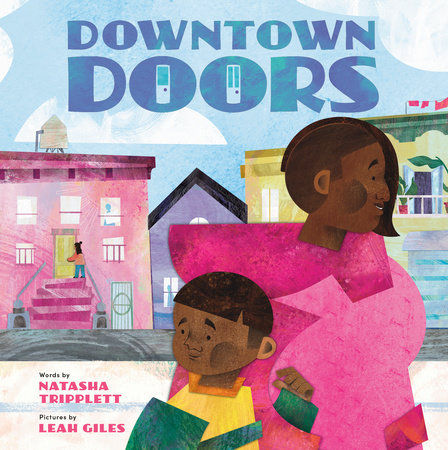Six Questions with Natasha Tripplett
- Mary Boone

- Sep 23
- 4 min read

Natasha Tripplett lives in Northern California, where she writes from a tree house perched in a sycamore tree. Natasha is a Jamaican Jewish American author who is passionate about cultural representation in children's literature. She bubbles with excitement over antiques, chocolate, coffee on the front porch, and cozy movie nights in front of the fireplace with her husband and four children. Natasha is the author of The Blue Pickup, Juneteenth Is, Planted with Love, and Downtown Doors. You can visit her at NatashaBooks.com.
1. When you’re not writing, what are your favorite things to do?
When I’m not writing, I love discovering new books and getting lost in a good story. I also enjoy repurposing antique treasures—there’s something meaningful about giving old things new life. Most of all, I cherish time with my husband and four children, whether we're at the beach, the park, or catching a movie together. I'm a loyal Warriors fan, and one of my favorite simple joys is sipping coffee on the front porch with my husband. I also love traveling and meeting new people—there’s always a new perspective to learn from and a story waiting to be heard.
2. Where do you write?
I write in my treehouse, which I lovingly call my Writing Studio. It’s tucked away above the ground with shelves lined with my favorite books—many of them mentor texts I turn to for guidance and inspiration. There’s a little electric fireplace that keeps the space cozy, no matter the season. One of the best parts is the view: I overlook a protected area full of wildlife. I’ve seen turkeys, cows, deer, wild boar, coyotes, all kinds of birds, and plenty of curious little critters. Being surrounded by nature gives me a constant sense of wonder, and this setting has become a wellspring of inspiration for my stories.
3. What do you feel you’ve gained from being a part of the children’s writing community?
Being part of the kidlit community has been an incredible gift. I’ve found encouragement, mentorship, and true friendship among people who get me—people who understand both the joy and the vulnerability of writing for children. It’s a community that values diversity, equity, and the power of stories to reflect and celebrate all children’s experiences. There’s a special kind of magic in collaborating with others who believe that every child deserves to see themselves in a book. This community has taught me to be brave with my voice, generous with my support, and playful in my creativity. I’m deeply grateful to be part of a space where imagination, heart, and purpose come together.

4. Where did you get the idea for this new book? What was your inspiration?
I wrote Downtown Doors after driving through Oakland, California, and seeing all of the homeless encampments. It broke my heart—especially seeing that little children were also experiencing homelessness. That drive made me think deeply about all the ways communities are called to care for one another. I remembered volunteering with my church’s food pantry and how even small acts of kindness can make a difference. But in that moment, the problems felt overwhelming.
I started to wonder—if I was feeling this way, what were children thinking as they looked out of their car windows at the same sights? Did they feel powerless in the face of such a big issue? I wanted kids to know that they absolutely can make an impact in their communities. That they are important. That they have a voice—no matter how much or how little they have. We all can make a difference. That’s the message at the heart of Downtown Doors.
5. If you read this book to a room filled with kids, what message would you want them to leave with?
If I read Downtown Doors to a room full of kids, the message I’d want them to leave with is that everyone has the power to make a difference in their community, no matter how big or small. No matter how old someone is, they are a vital part of their community. It’s more than just making a difference—it’s about actively participating in the well-being of their neighborhood. I want them to understand that every person matters and that kindness, compassion, and respect are the keys to building stronger, more caring communities. Even when problems feel overwhelming, their voices and actions can bring hope and change. Most importantly, I want them to see that their stories and experiences are important and worthy of being heard.
6. Did you have a lot of collaboration with the illustrator?
The book’s illustrations feature real places in Oakland that have been meaningful to me over the years. I was able to drive through the city and snap photos of the landscape, businesses, doors, and everyday sights to share with the illustrator, Leah Giles. Some of the illustrations include Marcus Books—the oldest Black-owned bookstore in the country—the iconic Fox Theater, Gregory’s Gourmet Desserts (their peach cobbler is incredible!), Shiloh Church, which is my church, and many more. I love the ways that Leah depicted the characters; they have such personality that truly comes off the page. Leah’s incredible collage art brings these images—and the heart of the story—to life in such a powerful way.




Comments